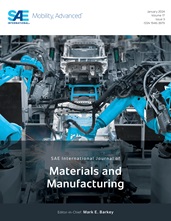Reliability Testing and Damage Analysis of Lead-Free Solder Joints: New Assessment Criteria for Laboratory Methods
- Event
- Content
- Driven by legislation in the European Union (ELV directive 2000/53/EC [1]) and international industry activities for the use of environment-friendly technologies, automotive suppliers and OEMs are faced with the demand to substitute lead-containing solders in electronic assemblies. Compared to consumer electronics, for which lead-containing technologies had to be phased out by July 2006, automotive applications have to meet considerably higher requirements concerning lifetime and environmental loading conditions, which mainly result from superimposed vibrations and temperature cycling. Therefore, advanced reliability testing and damage analysis techniques are needed to ensure a reliable use of lead-free solders.This paper presents the results of reliability tests that aimed at assessing the capabilities of different analysis tools to characterize solder joints for quality assurance and damage analysis. Detailed electric and mechanical testing as well as metallographic cross-section analysis of differently aged specimens soldered with standard SnPb and lead-free SnAgCu-solder revealed advantages and disadvantages of commonly used examination methods. The gained experiences are used to develop an approach for a new test series. The goal is to develop quantitative measures for damage analysis of solder joints via new testing methods and more elaborate examinations of common methods. On the basis of these measures a more distinct correlation of failure modes to loading conditions shall be possible.
- Pages
- 9
- Citation
- Steller, A., Zimmermann, A., Eisenberg, S., Wolter, K. et al., "Reliability Testing and Damage Analysis of Lead-Free Solder Joints: New Assessment Criteria for Laboratory Methods," SAE Int. J. Mater. Manf. 2(1):502-510, 2009, https://doi.org/10.4271/2009-01-1368.
